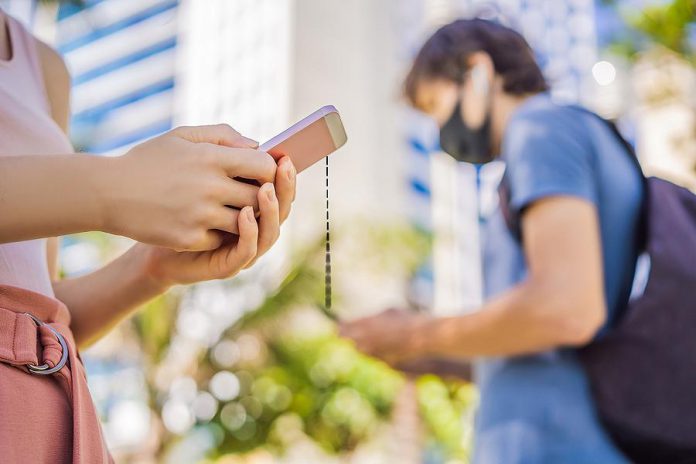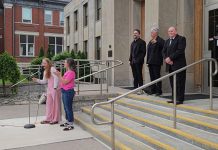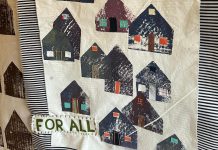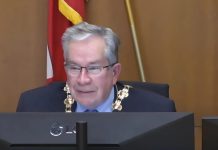
As part of the Ontario government’s plan to enhance COVID-19 case and contact management, the province is launching a new contact-tracing app called COVID Alert.
Premier Doug Ford made the announcement on Thursday (June 18) during a media conference at Queen’s Park with health minister Christine Elliott and Ontario’s chief medical officer of health Dr. David Williams. Earlier in the day, Prime Minister Justin Trudeau also announced the app, which was developed in partnership between the two governments.
Users who voluntarily download the app will be notified anonymously if they have been exposed to someone who has tested positive for COVID-19 in the last 14 days.
The app was made in Ontario by the Canadian Digital Service and the Ontario Digital Service, departments of the federal and provincial governments, with assistance from volunteers from Canadian tech firm Shopify.
The COVID Alert app is expected to be available for download on iOS and Android devices beginning on Thursday, July 2nd. It will be available in Ontario first, and then rolled out across Canada.
In Ontario, the app will also provide users with quick access to Ontario’s public health advice and resources, and recommend any necessary actions, such as monitoring for symptoms, self-isolation, or appropriate next steps on getting tested.
Some public health experts debate the effectiveness of a voluntary contract-tracing app at substantially reducing the spread of COVID-19. Researchers at Oxford University estimate that 60 per cent of the population would have to use an app to stop an epidemic, but that lower usage could still reduce the number of cases and deaths.
In other countries where voluntary contract-tracing apps have already been rolled out, user adoption has been limited. In Italy, only five per cent of people have downloaded that country’s contract-tracing app. In Singapore, one of the first countries to implement a contact-tracing app, adoption has reached 20 per cent. In Iceland, 38 per cent of the population had downloaded its contact-tracing app — the highest level of voluntary adoption to date.
That may be why, in Ontario, the app will only be used as a supplement for manual contact tracing.
“Our federal counterparts are looking at other jurisdictions that have tried other apps to see what is a core metric that is necessary to show its effectiveness,” said Ontario’s chief medical officer of health Dr. David Williams. “The actual number isn’t there yet, it’s an adjunct to our case and contact management. This is just another tool and we really want to understand how effective this is going to be.”
Ford also announced that the federal government would be providing up to 1,700 additional staff from Statistics Canada to assist with contact tracing, supplementing the existing 2,000 case managers and contact tracers in Ontario.
“These are absolute pros at data collection,” Ford said. “They speak 35 different languages and they can make up to 20,000 calls a day.”
In addition, the Ontario government will continue to build a supplementary pool of contact tracers over the summer and into the fall, drawing from workers in the Ontario Public Service and the broader public sector, in case there’s a second wave of COVID-19 infections. These will allow public health units to reduce the number of staff committed to contact tracing, so staff can return to their other critical functions, including vaccinations and inspections of food premises and water in recreational facilities.
Ford also announced the government would be modernizing the integrated Public Health Information System (iPHIS) by implementing a new custom-built COVID-19 case and contact management system.
How the COVID Alert app works
The COVID Alert app incorporates exposure notification software developed in a first-of-its-kind partnership between Apple and Google, and relies on Bluetooth wireless technology to communicate information while protecting a user’s security and privacy.
Once enabled, the software sends out a beacon via Bluetooth that includes a random Bluetooth identifier — basically a string of random numbers that isn’t tied to a user’s identity and that changes every 10 to 20 minutes for additional protection.
Other phones will be listening for these beacons and broadcasting their own as well. When each phone receives a beacon from another phone, it will record and securely store that beacon on the device.
At least once per day, the system will download a list of keys for beacons that have been verified as belonging to people confirmed as having tested positive for COVID-19. Each device will check the downloaded list against the beacons it has already recorded.
If the device finds a match, the user will be notified and advised on what steps to take next.
The software does not collect location data from your device, and does not share the identities of other users to each other, Google, or Apple. The user controls all data they want to share, and the decision to share it.




























